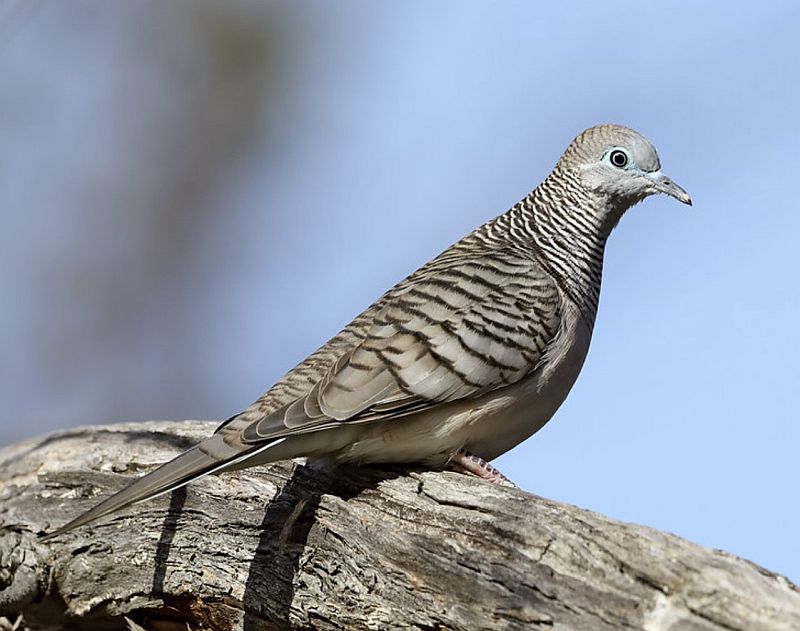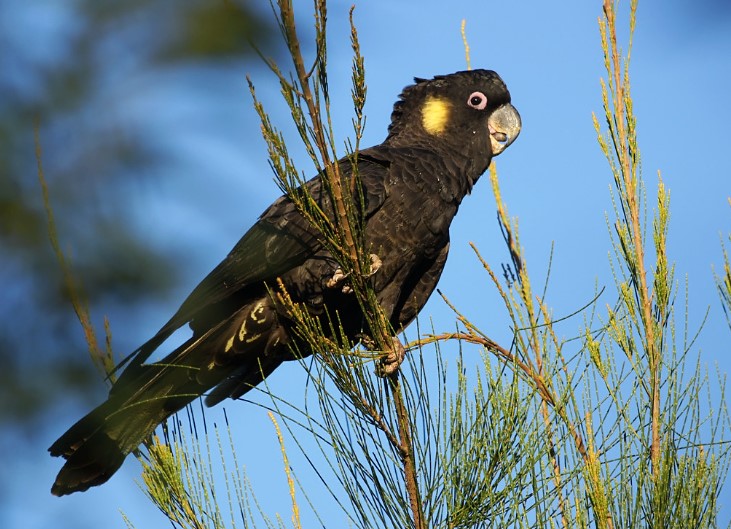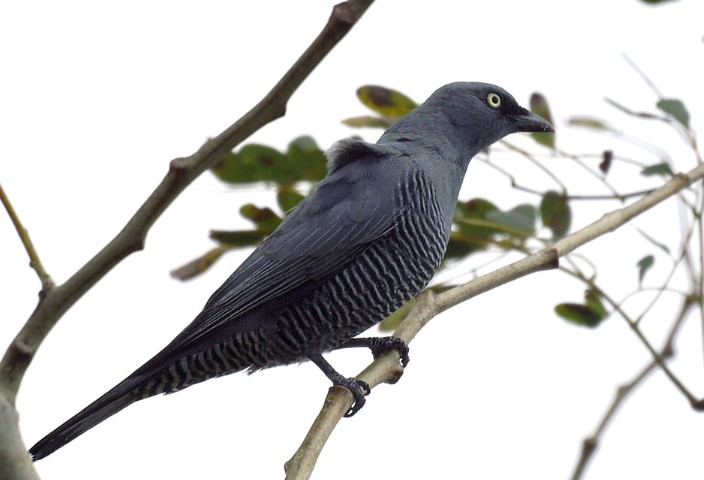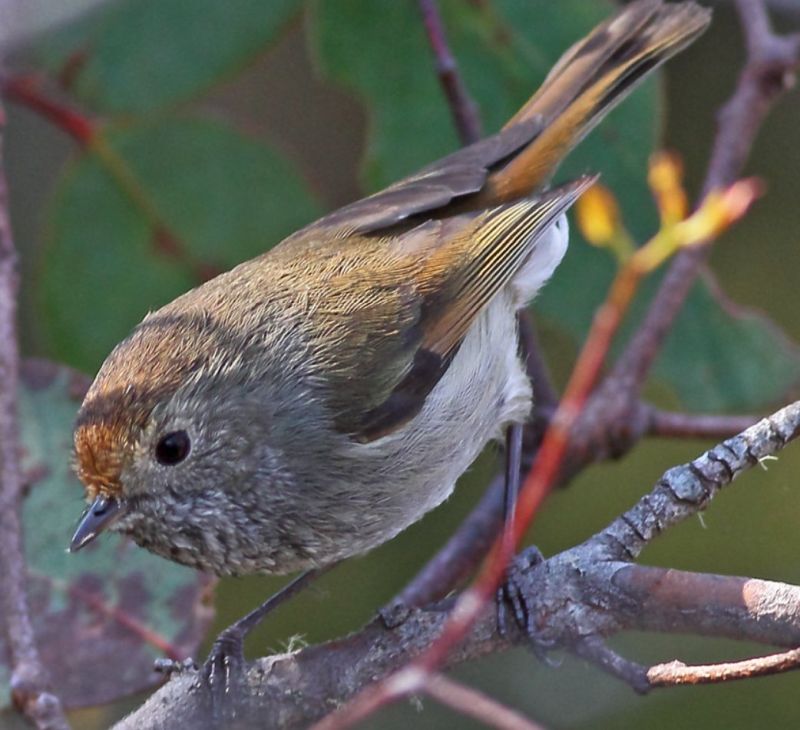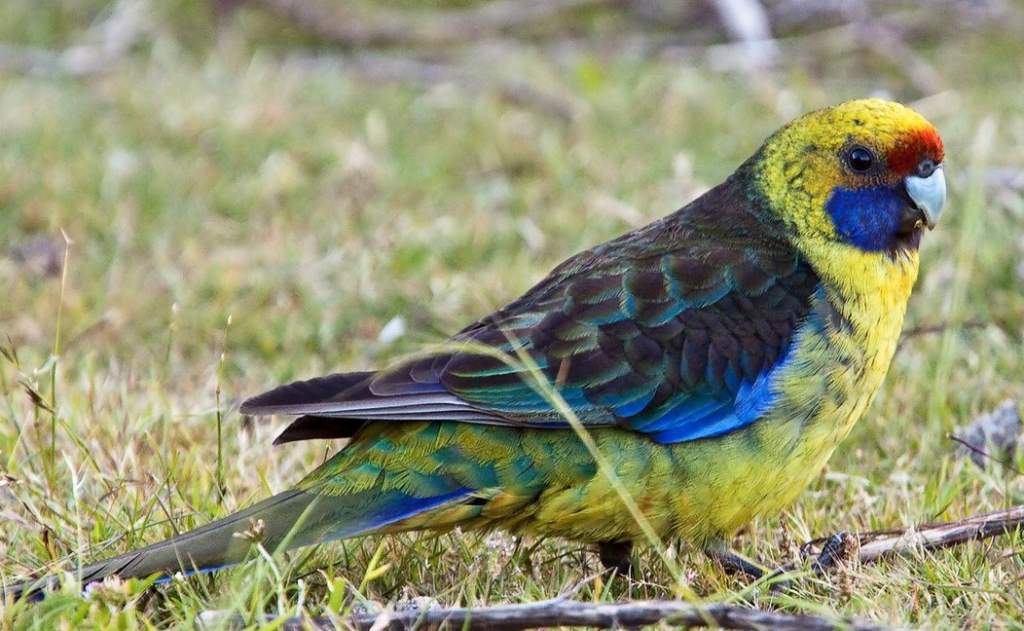Family: Peaceful Dove (Geopelia placida) is a member of the family Columbidae
Habitats: The peaceful dove is a closely related species of animal that can live together yet be ecologically separated, as well as its relatives, the diamond dove and the bar-shouldered dove. Their ranges overlap considerably, they live in the same habitat, and their food comes from essentially the same sources, yet they can co-exist with one another. The Diamond Dove avoids direct competition when it is in the same areas as the Peaceful and Bar-shouldered Doves by selecting its food from seeds in a different range of sizes. In addition, it is highly nomadic, which enables it to move to more arid and unreliable areas than its more sedentary relatives.
Identification: Both adult sexes are similar. The forehead and face are blue-grey; the crown is grey-brown with fine black bars. The upper parts are grey-brown and boldly barred with broken black lines. Throat blue-grey; upper breast blue-grey barred with wavy black lines; lower breast and belly white with pink tinge. The upper side of the tail is deep grey; the underside is dark brown; and the feathers are tipped with white. Underwing rufous-brown; flight feathers dark grey. The eyes are grey-white; the skin around the eye is blue. The bill is blue-grey. Feet are dark red-brown. The immature bird is a little duller and browner than adults, with less distinct barring. The downy young is silver-grey.
Diet: The peaceful and bar-shouldered doves feed on seeds in the same size range, but they remain separated, selecting different places in which to feed. The Peaceful Dove, which eats seeds of a very wide variety of grasses, herbs, and shrubs, shows a preference for feeding on roadsides, in dusty places, and in areas that have been burned. The bar-shouldered dove eats a narrower range of seeds and prefers those of plants growing in moister soil.
When they are living in the same area, peaceful doves feed freely through the woodland, but bar-shouldered doves feed closer to the edge or along creeks. In the tropics in the wet season, when dense tall grass makes much of the food unavailable, peaceful doves move to the more sparsely vegetated gravelly ridges inland, where collecting food is simpler.
The peaceful dove finds suitable habitat in any well-grassed woodland, provided water is nearby, and it is also found living in farmland, feeding with pigs and poultry, and in town parks and gardens. In a few southern towns, however, it comes into competition with the introduced spotted turtle dove and, according to some ornithologists, has declined as a result.
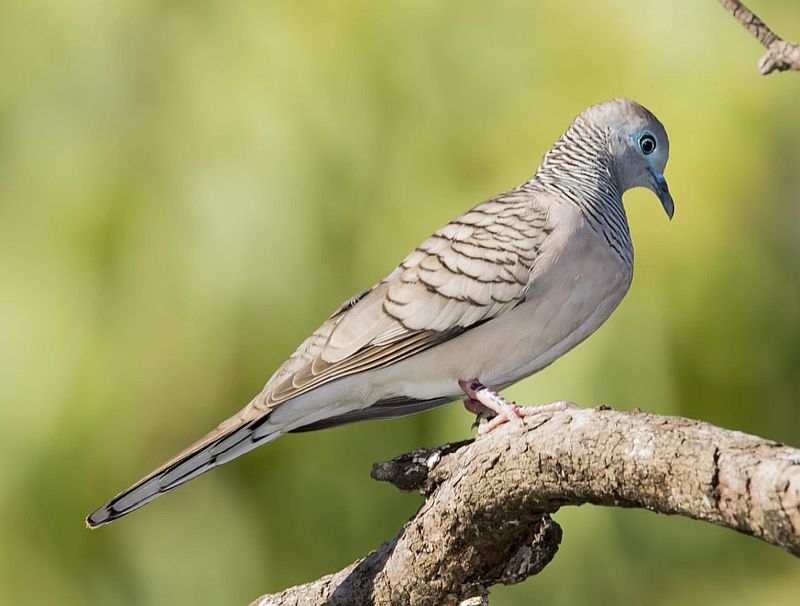
Behavior: The majority of peaceful doves live in pairs or small groups, but occasionally many of these groups will congregate around a watering hole or preferred feeding spot to form enormous congregations. They nest and roost in trees and bushes but feed entirely on the ground and drink often. When running, they move nimbly with their heads bobbing. The birds rise from the ground with whirring wings and seldom fly far before alighting on the branch of a tree or shrub.
The general behavior and courtship display postures of the male Peaceful Dove are similar to those of the other doves of the genus Geopelia. All perform the bowing display towards a female or while walking swiftly behind one, when they pause and bow every few steps. At the bottom of each rapid bow of the head and breast, the bird, with a coo, partly opens his wings, raises his tail, and fans it fully open. Peaceful doves commonly perform such displays on a thick branch or fence rail, more so than other Australian Geopelia spp.
Flight: However, the peaceful dove flight is rapid, low, and undulating, characterized by a dip brought on by wing shutting that is interspersed with quick wing beats. Like the others, they also have a steep, clapping display flight.
Vocalizations: Peaceful Dove calls identity a moderately high-pitched goo-la-goo, doodle-doo, or coo-a-luk; also coo-luk and soft, drawn-out ah-coo-coo in contact; and repeated short soft coos in alarm.
Nesting and Breeding: Peaceful dove nesting and breeding occur in any month of the year. In the tropics, the peak is at the end of the season, March–April; in the south, it is mostly September–January. Nest a frail platform of sticks up to 70 mm in diameter, placed in a horizontal fork of a thick limb or a clump of twigs, 1–12 meters above ground.
Eggs and Incubation: The dove lays two eggs, smooth, lustrous white, oval, about 23 x 17 mm. The incubation period is about 13–14 days for both sexes. Young fledge in about 15–16 days. Both parents help each other raise the chicks.
Distribution: Peaceful Dove is found in well-grassed eucalypt woodland with water nearby, across northern and eastern Australia. Also found in Papua New Guinea, Asia, South Burma, and the Malay Peninsula.
Other Names: This dove is also known as the Zebra Dove or Turtle Dove.
Size: The Peaceful Dove is a small pigeon, and it measures about 200–220 mm in length.
Races: There are two races: one, pallid grey, in the Pilbara; the other, darker, elsewhere.
Status: The species is in large numbers; hence, it is the least concerned on the IUCN list.
Read More: White-winged Dove (Zenaida asiatica)
